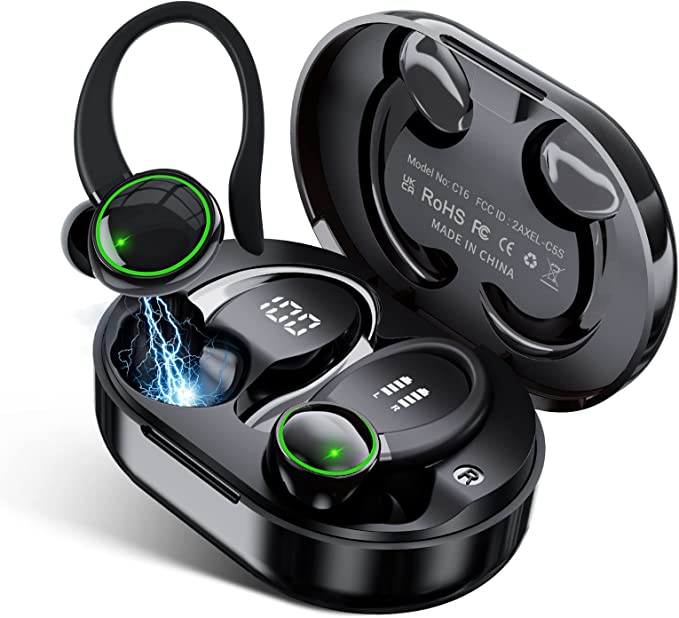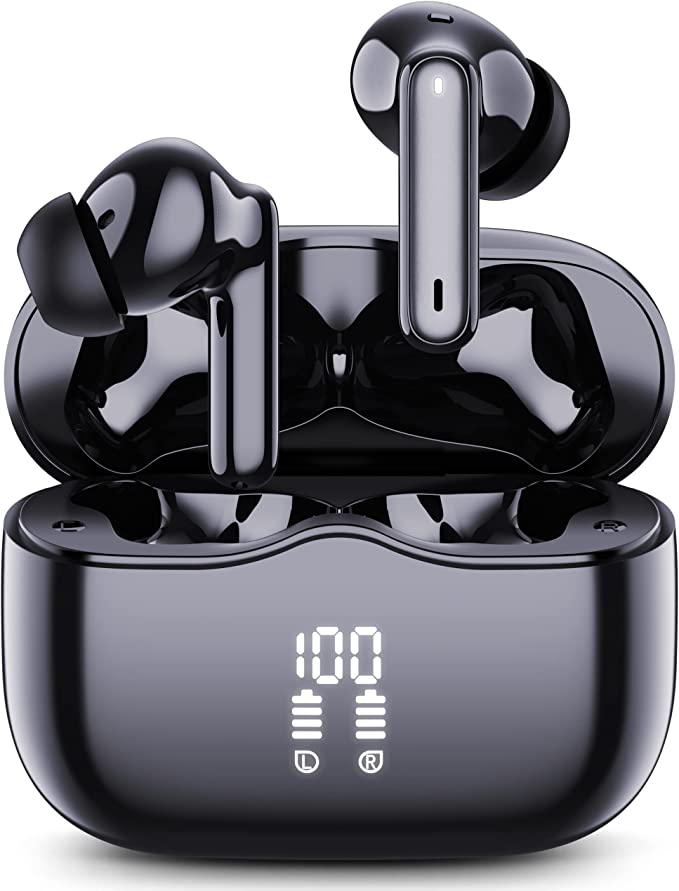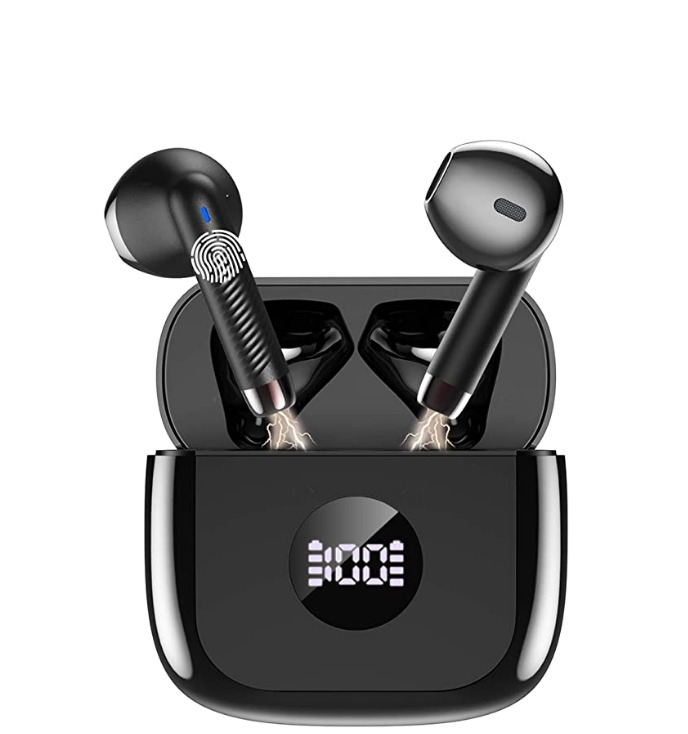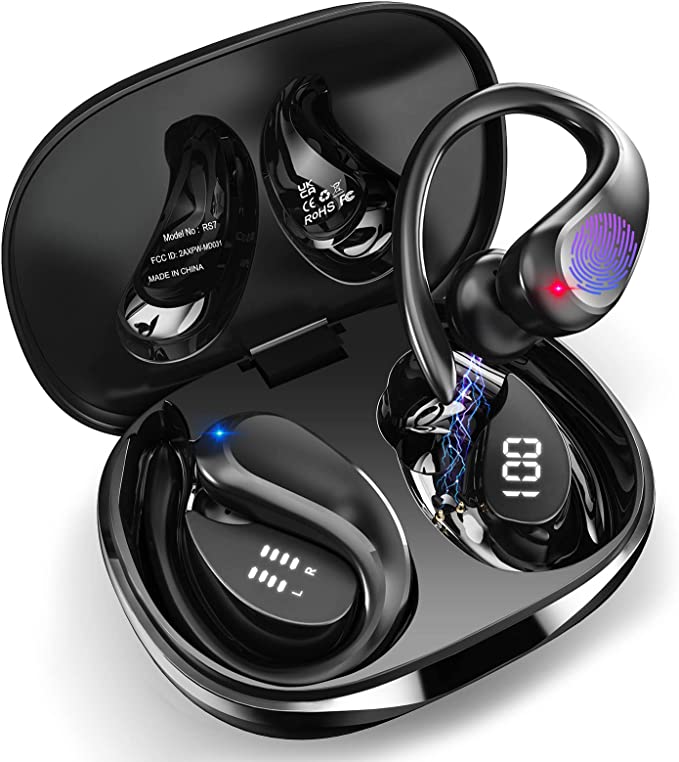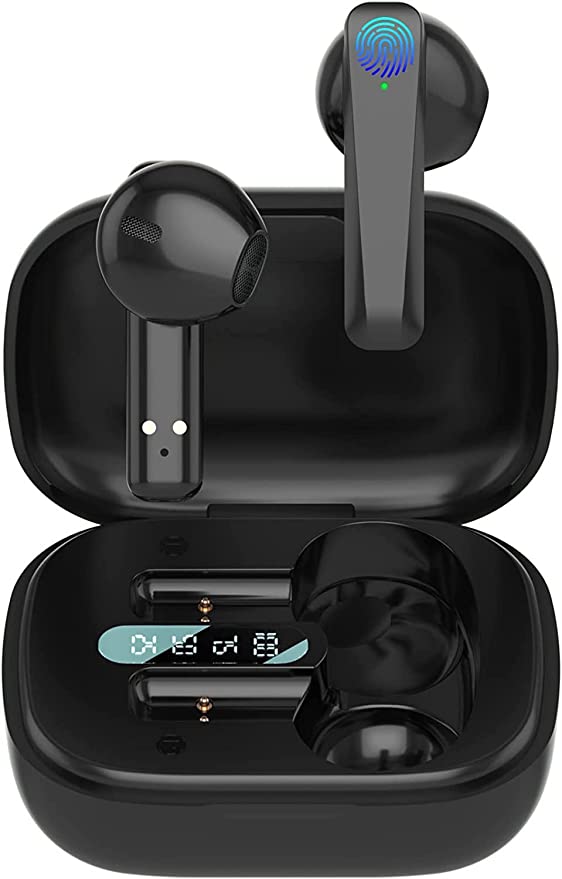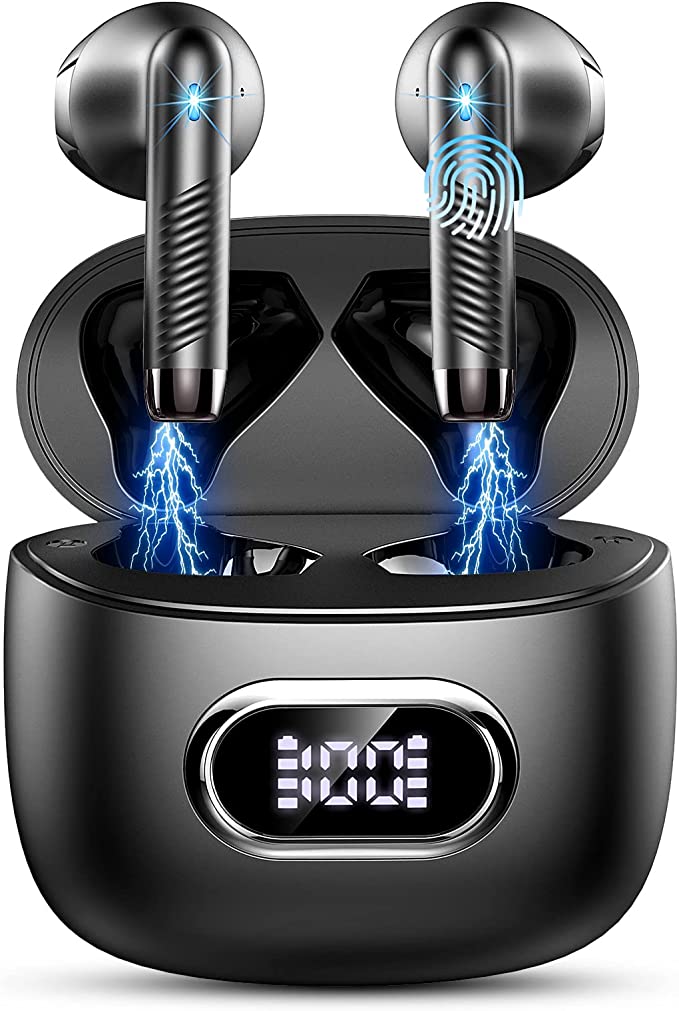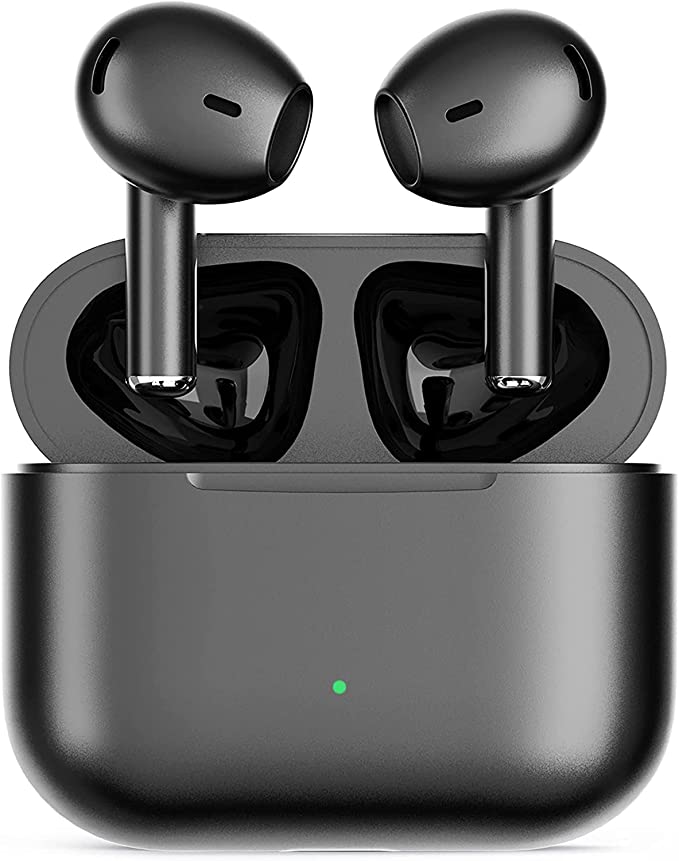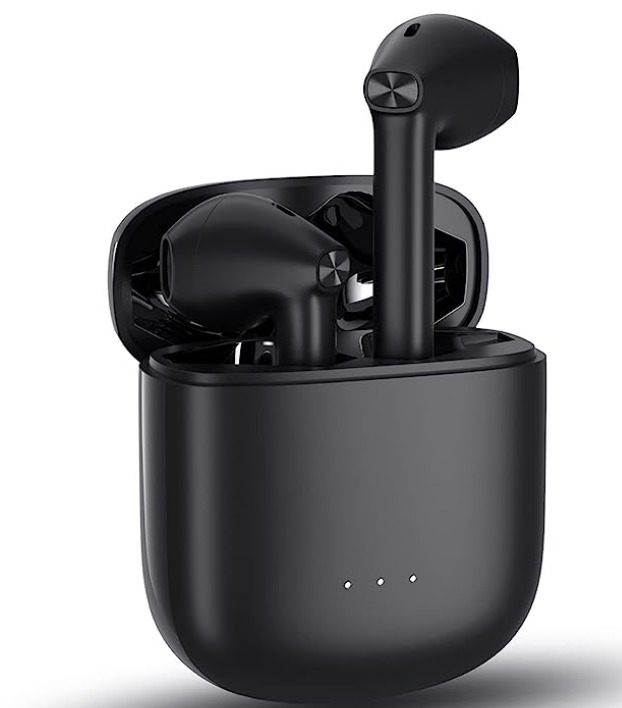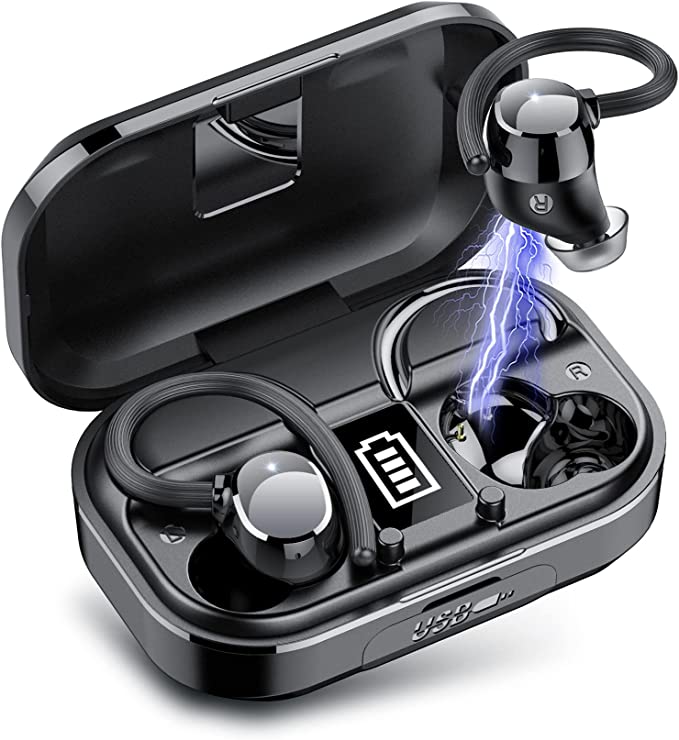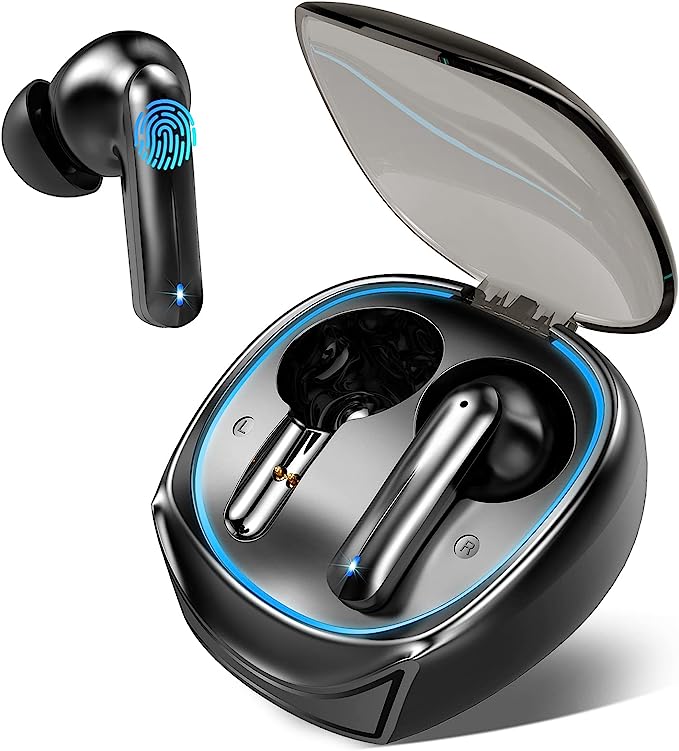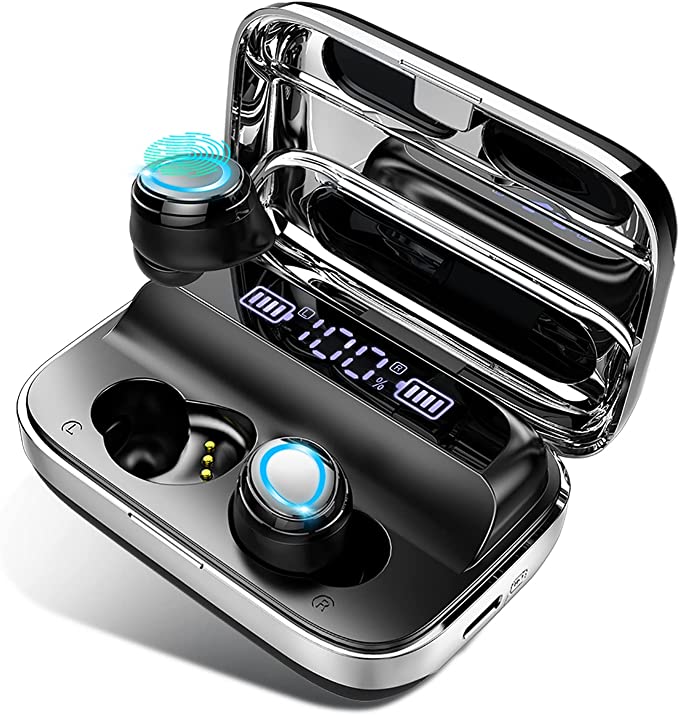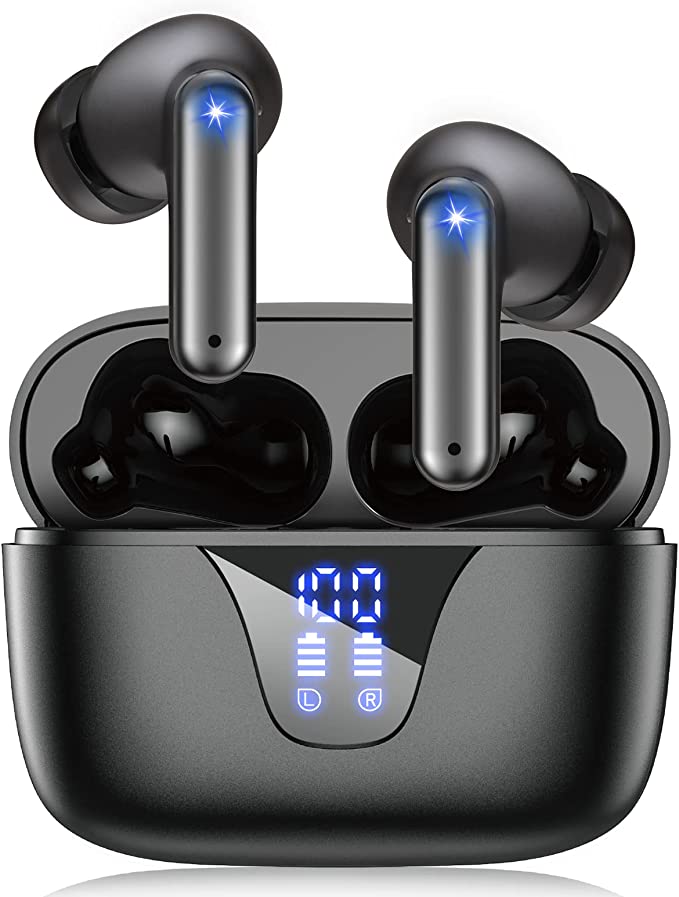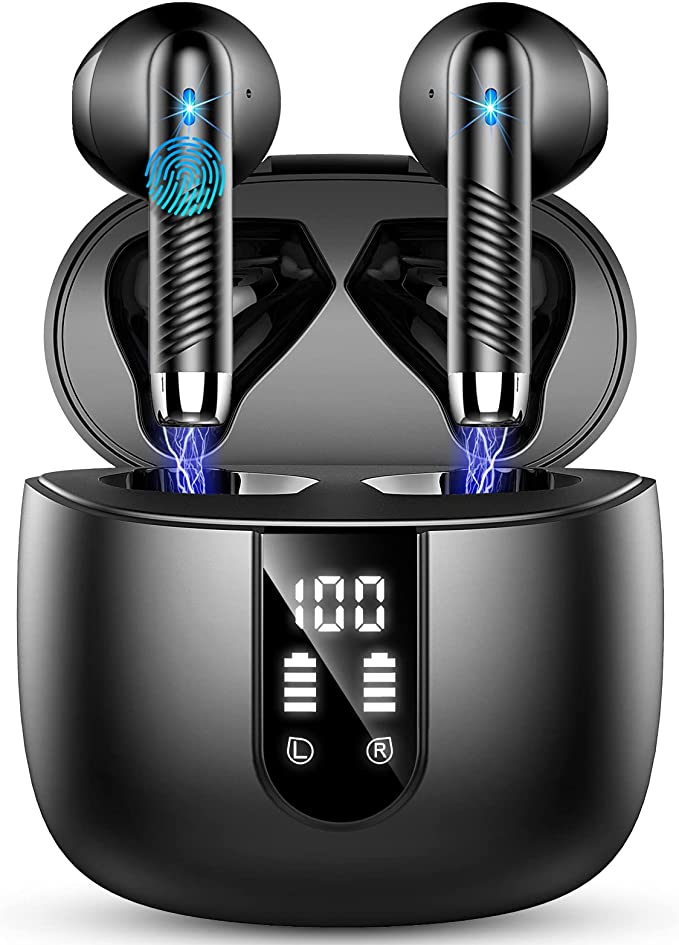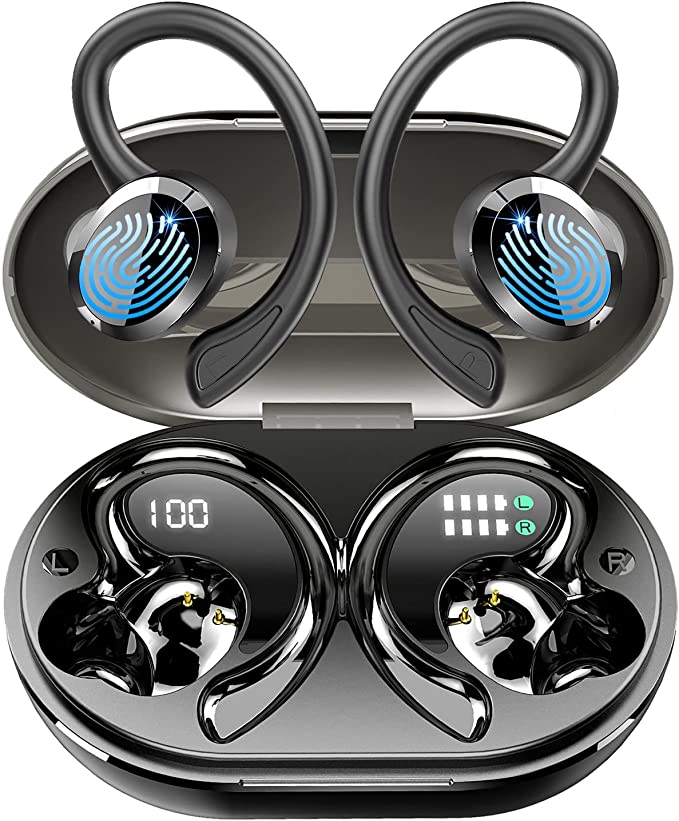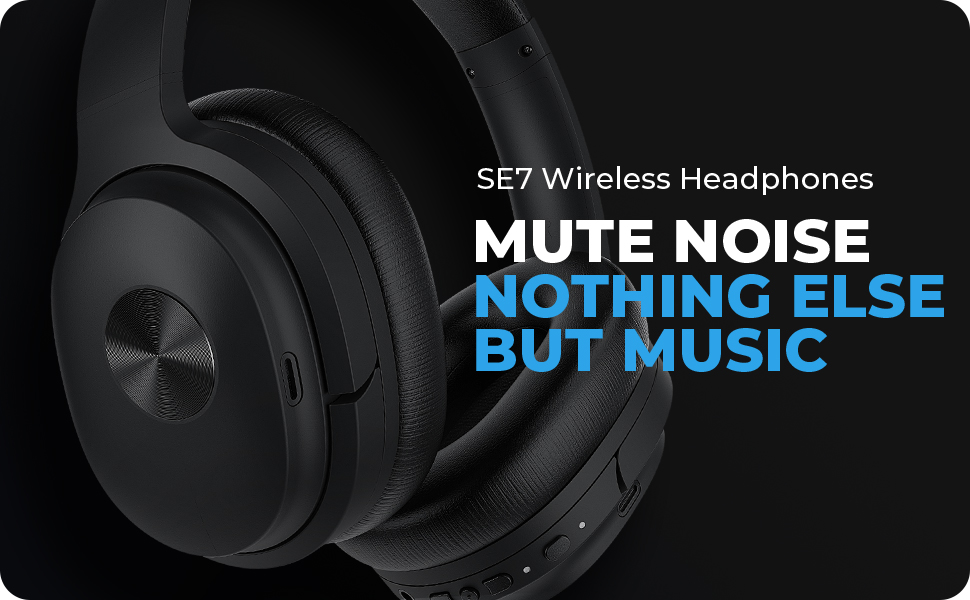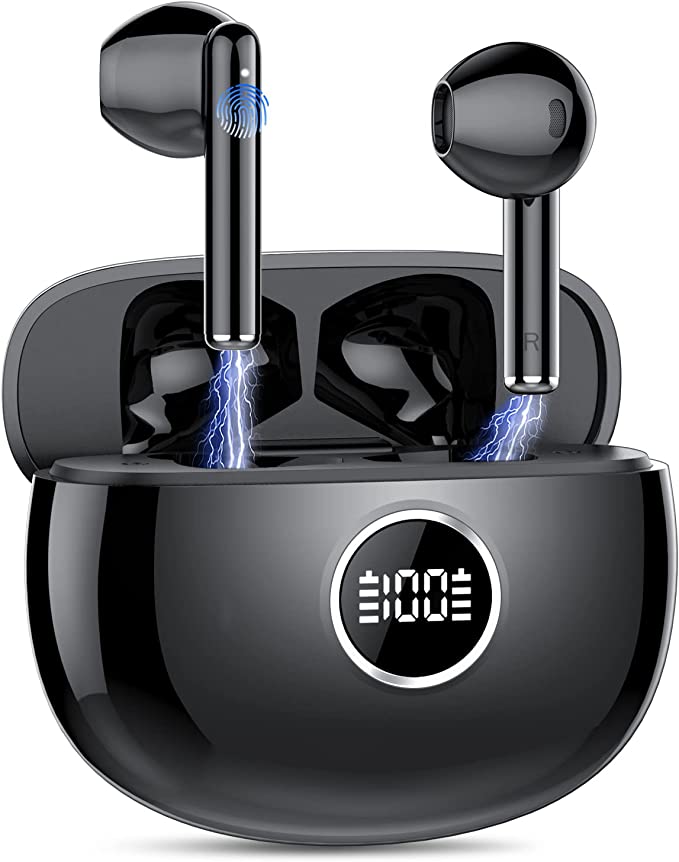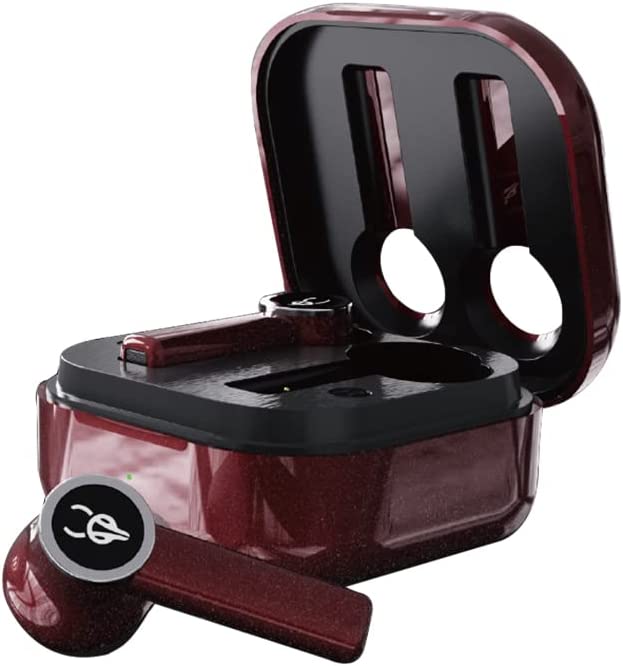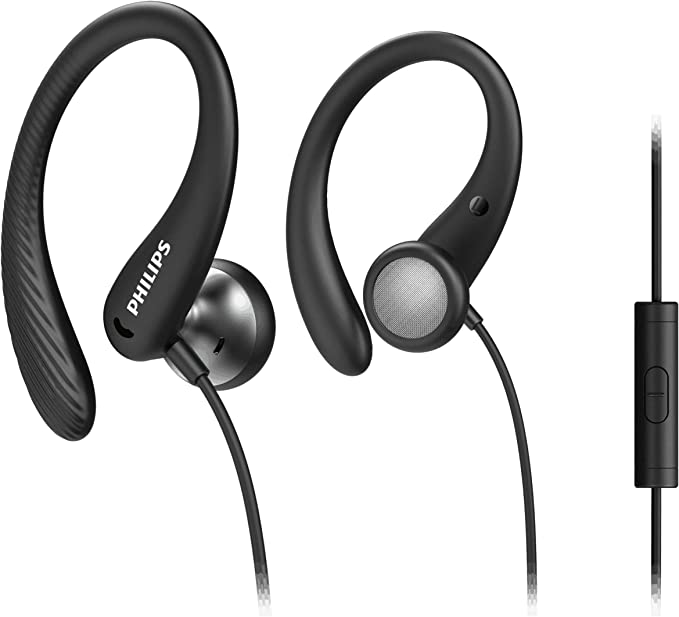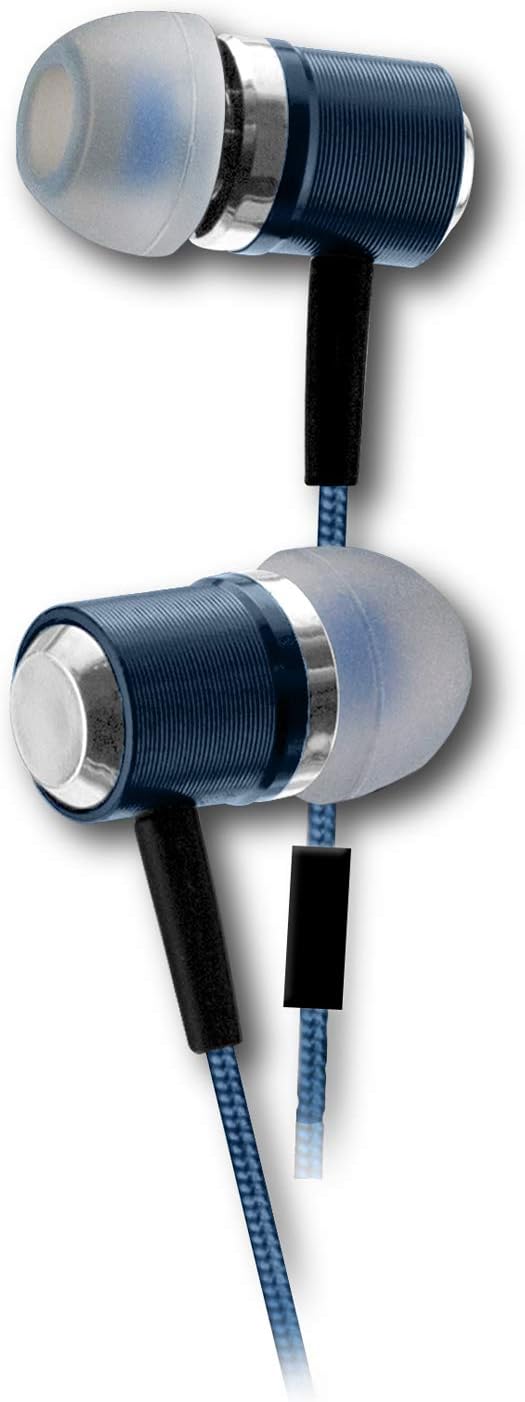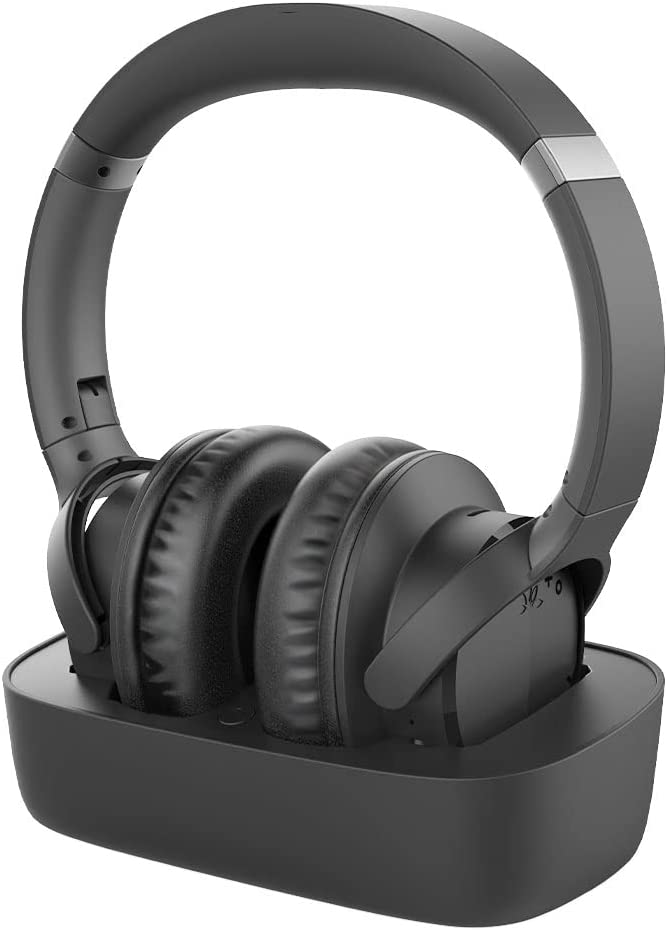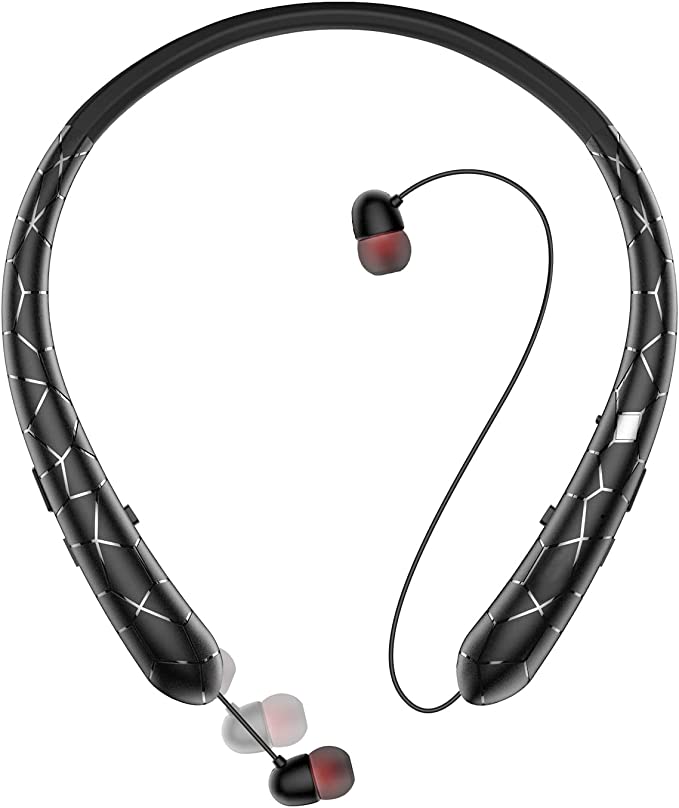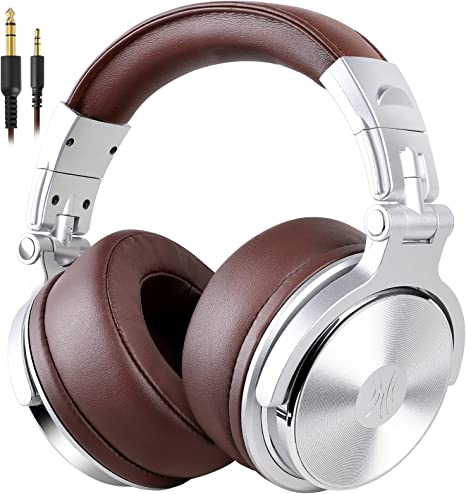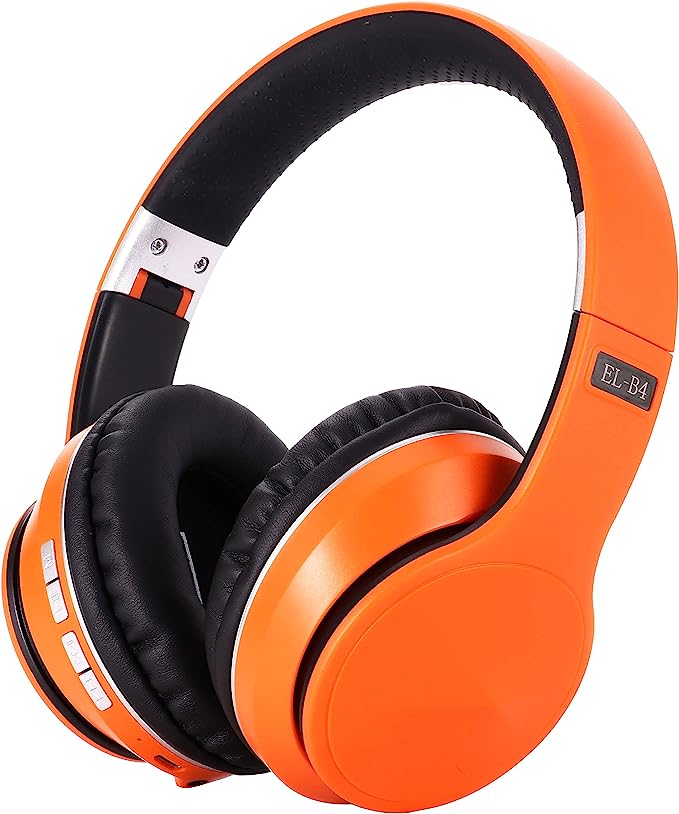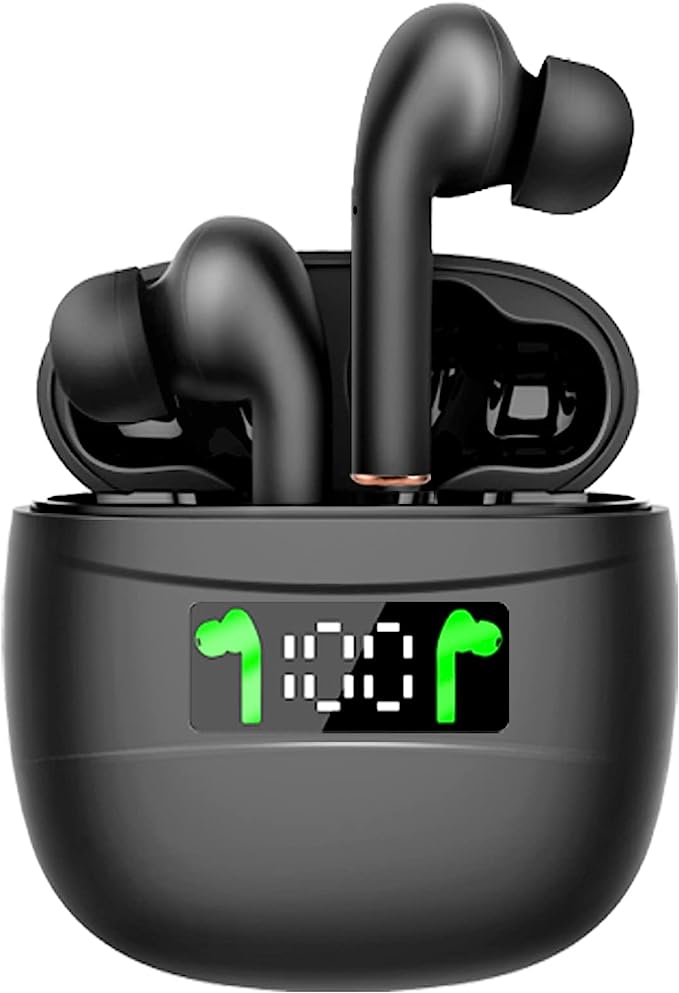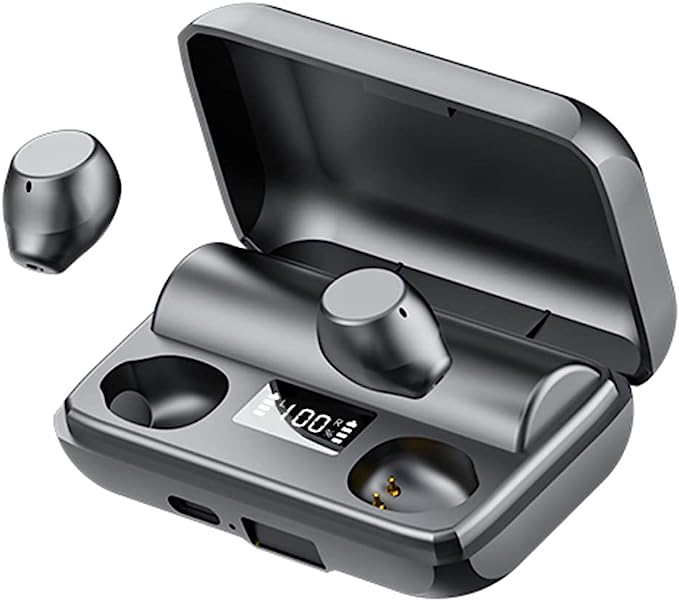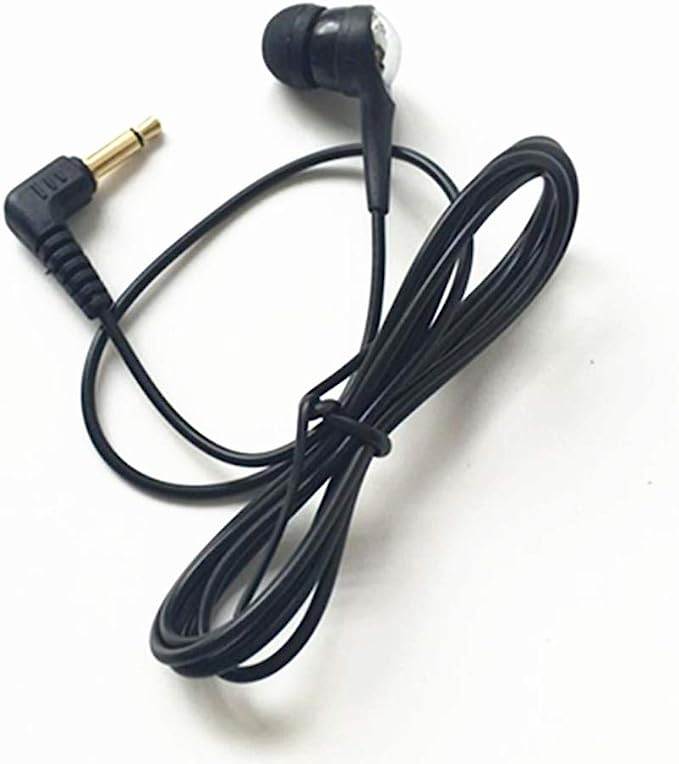AOTONOK C16 Wireless Earbuds: Unveiling the Science of Sound, Stability, and Endurance
Update on May 30, 2025, 10:41 a.m.
The world around us is increasingly untethered, a symphony of digital information flowing invisibly through the air. Nowhere is this wireless revolution more personal, more intimately woven into the fabric of our daily lives, than in the realm of audio. Gone are the days of wrestling with tangled headphone cords; today, sleek, intelligent earbuds deliver our soundtracks, podcasts, and connections with an air of technological magic. But this magic isn’t an illusion—it’s the product of relentless innovation and a deep understanding of science and engineering. Today, we’ll delve into this fascinating world, using the AOTONOK C16 wireless earbuds as our guide, not merely to review a product, but to explore the remarkable technologies that empower our wireless auditory experiences. Our journey is one of decoding features, understanding their “why” and “how,” and appreciating the intricate dance of physics and ingenuity that brings sound to our active lives.

The Digital Lifeline: Making Sense of Bluetooth 5.3’s Promises
At the heart of any wireless audio experience lies Bluetooth, a technology so ubiquitous we often take its quiet efficiency for granted. The AOTONOK C16 earbuds are equipped with Bluetooth 5.3, one of the more recent iterations of this standard. But what does this version number truly signify for your listening experience? It’s far more than just an incremental update; it represents tangible improvements in how your audio data is transmitted and managed.
Before diving into the specifics of 5.3, it’s worth a brief, charming nod to history. The Bluetooth name itself harks back to Harald “Bluetooth” Gormsson, a 10th-century Danish king famed for uniting warring Danish tribes. Similarly, the Bluetooth technology was conceived to unite different communication protocols under one universal standard. Conceived by Ericsson in the 1990s, it has since evolved dramatically under the stewardship of the Bluetooth Special Interest Group (SIG).
So, what does version 5.3 bring to the table? Imagine upgrading your internet connection from a sometimes-congested single-lane road to a multi-lane superhighway with intelligent traffic management. Bluetooth 5.3 offers enhanced stability and efficiency in several ways. While the Bluetooth SIG outlines many technical improvements like LE Power Control and enhancements to the Attribute Protocol (ATT), for the end-user, this translates into a more robust connection. You’re less likely to experience those frustrating audio dropouts or stutters, especially in environments teeming with other wireless signals, like a crowded gym or a busy urban street. This is partly achieved through features that allow devices to more efficiently select transmission channels and manage connections, such as improvements in Periodic Advertising and Connection Subrating, which help devices maintain connections with less energy and greater reliability.
Power efficiency is another cornerstone of Bluetooth 5.3. The standard incorporates features that allow for lower energy consumption during data transmission and when idle. While the full suite of LE Audio features (which promise even greater efficiency and new audio capabilities like Auracast™ broadcast audio) is a broader initiative gradually being implemented across the ecosystem, Bluetooth 5.3 provides foundational support for more power-conscious operations. For the AOTONOK C16, this contributes directly to its claimed longer listening sessions on a single charge, allowing your audio to keep pace with your day.
Finally, there’s the chase for synchronicity – latency. Latency is the tiny delay between when your device sends an audio signal and when you actually hear it. High latency can be particularly jarring when watching videos, where dialogue might be out of sync with an actor’s lips, or during gaming, where sound cues lag behind the action. Bluetooth 5.3 aims to minimize this delay. While specific latency figures can depend on various factors including the audio codec used (like SBC, AAC, or aptX, though the C16’s product page doesn’t specify which advanced codecs it supports beyond the mandatory SBC), the underlying improvements in Bluetooth 5.3 facilitate a quicker, more responsive audio pipeline. The C16 product information mentions “Ultra Low-Latency,” claiming it’s “more than 3 times faster than conventional noise cancelling earbud,” which, while a bold claim without specific millisecond data or a defined “conventional” baseline, points towards leveraging these 5.3 enhancements. For you, this means a more immersive and less distracting experience, whether you’re catching up on a series or battling virtual foes.
The Science Unveiled: At its core, Bluetooth operates in the 2.4 GHz ISM (Industrial, Scientific, and Medical) radio band, the same busy neighborhood frequented by Wi-Fi routers, microwaves, and other wireless devices. To combat interference, Bluetooth employs a technique called Adaptive Frequency Hopping (AFH). Imagine a musician skillfully switching between 79 different channels (or 40 in Bluetooth Low Energy) hundreds of times per second, automatically avoiding channels that are noisy or occupied. Bluetooth 5.3 refines these mechanisms, making the “hopping” even smarter and more efficient, ensuring your audio stream finds the clearest path.
User Impact: The culmination of these Bluetooth 5.3 advancements is a wireless experience that feels more seamless and dependable. It means fewer interruptions when you’re engrossed in a podcast during your commute, a more stable connection when you’re relying on audio cues during a workout, and a more synchronized experience when enjoying multimedia content.

Crafting the Vibe: The Art and Science of the 6mm Composite Diaphragm
The soul of any earbud, the component that breathes life into electrical signals and transforms them into the music, voices, and soundscapes that color our world, is the driver. The AOTONOK C16 earbuds house 6mm composite diaphragm drivers. Let’s unpack what that means for the sound that reaches your ears.
A driver is essentially a miniature loudspeaker. It consists of a few key parts: a magnet, a voice coil (a coil of wire), and a diaphragm. When an electrical audio signal passes through the voice coil, it creates a fluctuating magnetic field that interacts with the permanent magnet. This interaction causes the voice coil, and the attached diaphragm, to vibrate rapidly. These vibrations create pressure waves in the air – sound waves – that travel into your ear canal and are interpreted by your brain as sound.
The diaphragm is the heart of this process. It’s a thin, flexible membrane, and its material and construction are critical to the sound quality. The term “composite” in “composite diaphragm” signifies that it isn’t made from a single, simple material but rather a blend or layering of different materials. Engineers do this to harness the best acoustic properties of each. For example, some materials are very stiff and light, which is excellent for reproducing high-frequency sounds (treble) with clarity and detail. Other materials might offer better damping (the ability to stop vibrating quickly after a sound is produced), which can prevent muddiness and improve the precision of bass notes. A common goal with composite diaphragms is to achieve a balance – a diaphragm that is light enough to respond quickly to high frequencies, stiff enough to produce impactful bass without distortion, and well-damped enough to deliver clear, articulate midrange frequencies where vocals typically reside. While the specific materials in the C16’s diaphragm aren’t detailed, the aim, as stated, is to deliver “powerful bass and stunningly clear vocals.”
The “6mm” refers to the diameter of the diaphragm. In the world of earbud drivers, this is a relatively common size. It’s a balancing act: a larger diaphragm can theoretically move more air and produce more powerful bass, but it also requires more space and potentially more power. A 6mm driver is compact enough for in-ear designs while still being capable of delivering a full-range sound experience.
The product also mentions “3D Stereo” or “HD Stereo.” This generally refers to audio processing and driver tuning techniques aimed at creating a wider, more immersive soundstage than traditional stereo. The goal is to make the music feel less like it’s coming from two distinct points inside your ears and more like it’s enveloping you, creating a sense of space and depth. This can be achieved through careful phase and timing alignment of the audio signals delivered to each ear.
The Science Unveiled: The fundamental principle at play is the conversion of electrical energy into mechanical energy (the diaphragm’s vibration) and then into acoustic energy (sound waves). The ideal diaphragm would be infinitely stiff, feather-light, and perfectly damped, allowing it to reproduce all frequencies with perfect accuracy. Since no such material exists, engineers experiment with composites – perhaps a core of PET (Polyethylene terephthalate) for flexibility, coated with a layer of a stiffer material like Beryllium or a specialized polymer, or even incorporating materials like LCP (Liquid Crystal Polymer) or graphene in more advanced designs. Each combination offers a different compromise, aiming for a specific sonic signature.
User Impact: For you, this intricate science translates into the quality of your listening experience. A well-designed composite diaphragm can mean the difference between muddy, indistinct bass and a tight, punchy low end; or between harsh, sibilant highs and crisp, airy treble. It means hearing the subtle nuances in a singer’s voice or the distinct separation of instruments in a complex musical piece. It’s about bringing you closer to the artist’s original intent.

The Marathoner’s Heartbeat: Unpacking 40 Hours of Playtime & The Clarity of Dual LED Indicators
In our always-on world, battery life is king. Few things are more frustrating than your earbuds dying mid-workout or during an important call. The AOTONOK C16 earbuds address this head-on with a claimed total playback time of 40 hours – 8 hours from a single charge of the earbuds themselves, plus an additional 32 hours انتخابات (four full recharges) from the portable charging case. This impressive stamina is a testament to several converging factors.
At the core are the lithium-polymer (Li-Po) batteries housed within both the earbuds and the charging case. Li-Po batteries have become the standard for most modern portable electronics due to their high energy density (meaning they can store a lot of power relative to their size and weight), flexible form factors (they don’t need a rigid metal casing like traditional lithium-ion cylindrical cells), and relatively good lifespan if cared for properly.
But it’s not just about the batteries themselves. The overall power efficiency of the system plays a crucial role. As we discussed, Bluetooth 5.3 is designed with lower energy consumption in mind. Beyond that, the internal chipset, audio drivers, and other components of the C16 are optimized to sip power rather than gulp it. Every milliwatt saved contributes to those extra minutes, and eventually hours, of listening pleasure. An 8-hour playtime from the earbuds alone is quite respectable, allowing for all-day use for many people without needing a midday top-up. The charging case then acts as a mobile power bank, ensuring you can get through several days of typical use, or a long trip, without hunting for a power outlet.
A particularly user-friendly feature is the dual LED digital display on the charging case. This isn’t just a set of blinking lights; it’s a clear, numerical window into your remaining energy reserves. The product description notes it shows the power level for the charging case itself and that “When charging for the case, the LED light will start to flash from 1 to 100.” Many cases only offer a few vague indicator lights, leaving you guessing how much charge is truly left. A numerical display (likely a percentage for the case) and separate indicators for the earbuds (often showing if they are charging or fully charged) remove this guesswork. This allows you to plan your recharges more effectively and significantly reduces “battery anxiety” – that nagging worry that your tech is about to run out of juice.
The Science Unveiled: How do these LED displays estimate battery life? Typically, the circuitry inside the charging case and earbuds monitors the voltage of the lithium-polymer battery. A fully charged Li-Po cell has a higher voltage (e.g., around 4.2 volts) than a discharged one (e.g., around 3.0-3.2 volts). By measuring this voltage, the system can estimate the remaining capacity, often referencing a pre-programmed discharge curve specific to the battery type. This data is then translated into the percentage or bar graph you see on the display. It’s an estimation, as factors like temperature and battery age can affect the voltage, but it’s generally accurate enough for practical purposes.
User Impact: This substantial battery life and clear power indication mean freedom and peace of mind. You can confidently take the AOTONOK C16 on long commutes, extended travel, or through a full day of work and workouts, knowing they’re unlikely to leave you in silence. It’s about making the technology adapt to your lifestyle, not the other way around.

Braving the Elements: The Real Meaning Behind IP7 Waterproofing
For anyone who leads an active lifestyle or lives in a region prone to unpredictable weather, the durability of their electronics is a key concern. The AOTONOK C16 earbuds come with an IP7 waterproof rating, offering a significant degree of protection against moisture. But what exactly does “IP7” mean from a scientific and practical standpoint?
The “IP” in IP rating stands for “Ingress Protection.” It’s an international standard, specifically IEC 60529, designed to classify and rate the degree of protection provided by mechanical casings and electrical enclosures against intrusion from foreign objects (like dust and dirt) and, crucially for earbuds, moisture. The rating consists of two digits (and sometimes an optional letter).
Let’s break down “IP7”:
- The first digit relates to protection against solid particles. If an ‘X’ is used, like IPX7, it means the device hasn’t been specifically rated for solid particle protection, or the rating is not being claimed. The AOTONOK C16 product page simply states “IP7 Waterproof.” In such cases where only one aspect is heavily marketed (waterproofing), the solid particle protection might be assumed to be adequate due to the sealing required for water resistance, or it might not be the primary tested characteristic for that specific marketing claim.
- The second digit, the “7” in IP7, is what defines its liquid ingress protection. A “7” signifies that the device is protected against the effects of temporary immersion in water under specific, standardized conditions. According to the IEC 60529 standard, this means the earbuds can withstand being submerged in water up to 1 meter (about 3.3 feet) deep for a maximum duration of 30 minutes.
Achieving an IP7 rating isn’t trivial. It requires meticulous engineering of the earbud’s outer shell. This involves using tight seals, precision-fitted components, and potentially waterproof adhesives around any openings, such as the seams of the casing, microphone ports, and charging contacts (though contacts usually rely on the case for protection when not in use or employ corrosion-resistant materials). Some manufacturers also employ hydrophobic nanocoatings on internal components as an additional layer of defense, causing water to bead up and roll off rather than seep in.
The Science Unveiled: The core principle is creating a physical barrier that prevents water molecules from reaching sensitive electronic components. This involves understanding fluid dynamics at a small scale and selecting materials (like certain plastics and rubbers for seals) that are inherently water-resistant and can maintain their integrity under pressure and over time. The standardized testing ensures that an “IP7” rating from one manufacturer is comparable to an IP7 rating from another, as they are tested under the same laboratory conditions.
User Impact: For you, an IP7 rating means significant peace of mind. You can wear the AOTONOK C16 earbuds during intense, sweaty workouts without worrying about perspiration damage. If you get caught in a sudden rain shower on your run or commute, your earbuds should emerge unscathed. Some might even use them in the shower, though prolonged exposure to hot water, steam, or soaps is generally not recommended even for IP7-rated devices, as these can degrade seals over time.
Important Considerations: It’s vital to understand the limitations. An IP7 rating typically applies to freshwater; saltwater can be far more corrosive. It doesn’t mean the earbuds are designed for swimming or high-velocity water sports. Also, critically, the charging case for most wireless earbuds, including likely the AOTONOK C16, is not usually waterproof. You must ensure the earbuds are completely dry before placing them back in the case to charge, to avoid damaging the case or the earbuds’ charging contacts.

The Unshakeable Companion: The Ergonomic Promise of the Earhook Design
One of the most common frustrations with many true wireless earbuds, especially for active individuals, is their tendency to loosen or, worse, fall out entirely during vigorous movement. The AOTONOK C16 tackles this challenge head-on with its prominent earhook design, an ergonomic feature aimed at providing a secure and stable fit.
The problem of earbud security is rooted in the diverse and complex geometry of human ears. A traditional earbud relies primarily on friction and a snug fit within the concha (the bowl-shaped part of your outer ear) and the ear canal to stay in place. However, during activities like running, jumping, or even vigorous head movements, the forces exerted can easily overcome this friction.
The earhook design introduces a simple yet highly effective mechanical solution. Instead of solely relying on an in-ear fit, a flexible hook extends from the main body of the earbud and loops over the top and around the back of your ear. This creates an additional, crucial point of contact and support.
- Improved Stability: The earhook acts like an anchor, counteracting the downward and outward forces that can dislodge an earbud. It helps to distribute the earbud’s minimal weight more evenly.
- Reduced Movement: By securing the earbud over the ear, the hook minimizes the jostling and micro-movements that can break the ear tip’s seal within the ear canal, which can otherwise lead to a loss of sound quality (especially bass) and an insecure feeling.
Comfort is just as important as stability, especially for extended wear. The earhooks on earbuds like the C16 are typically made from soft, flexible, and skin-friendly materials, often a type of thermoplastic elastomer (TPE) or silicone. These materials can conform to the unique shape of an individual’s ear without exerting excessive pressure, aiming for a “barely there” feeling.
Furthermore, the effectiveness of any earbud, earhook or not, is significantly enhanced by a proper seal in the ear canal. This is why the AOTONOK C16, like most quality earbuds, comes with multiple sizes of ear tips (usually Small, Medium, and Large). Finding the right ear tip size is paramount:
- For Stability: A well-fitting tip creates a better grip inside the ear canal.
- For Sound Quality: A good seal is essential for optimal bass response and overall audio fidelity, as it prevents sound leakage and helps with passive noise isolation (physically blocking out some external sounds).
- For Comfort: An incorrectly sized tip can cause discomfort or pressure points.
The Science Unveiled: The ergonomic principles at play involve understanding biomechanics and anthropometry (the study of human body measurements). A successful earhook design considers the average curvature of the human ear, the forces experienced during common activities, and the material properties needed for both flexibility and resilience. It’s about creating a system where the earbud feels like a natural extension of the ear, rather than a foreign object precariously perched.
User Impact: The most significant benefit for you is the freedom to move without the constant worry of an earbud taking flight. Whether you’re pounding the pavement on a long run, engaging in a high-intensity interval training (HIIT) session, cycling on a bumpy trail, or simply moving energetically through your day, the earhook design aims to keep your audio locked in place. This allows you to focus entirely on your activity, your music, or your call, enhancing both performance and enjoyment.
A Subtle Command: The Intuitive World of Touch Controls
The way we interact with our devices is constantly evolving. With wireless earbuds, where space is at a premium and fumbling for your phone is inconvenient, on-device controls are essential. The AOTONOK C16 features an “intelligent touch control” interface, a common and increasingly sophisticated feature in modern audio wearables. This moves away from traditional physical buttons, offering a sleeker design and a different tactile experience.
This touch-based system typically relies on capacitive touch technology. Imagine the surface of the earbud, or a specific zone on it, as a tiny sensor. This sensor constantly maintains a stable electrostatic field. Your finger, being electrically conductive, disrupts this field when it comes close to or touches the sensor. The earbud’s internal circuitry detects this change in capacitance and interprets it as a command – a tap, a double-tap, a long press, or even a swipe.
The advantages of capacitive touch controls on earbuds are numerous:
- Seamless Design: Without physical buttons, the earbuds can have a smoother, more minimalist aesthetic. There are no moving parts that can wear out or crevices where dirt can accumulate.
- Ease of Use (Potentially): Once you learn the gestures, controlling playback, volume, calls, or activating your phone’s voice assistant can often be done with light, quick touches, which can be easier than trying to locate and press a small physical button, especially when you’re active or wearing gloves (though some gloves are not compatible with capacitive touch).
The AOTONOK C16’s product description mentions that these controls handle volume, track skipping, calls, and voice-assistant activation. This provides a comprehensive suite of functions right at your fingertips, reducing the need to constantly reach for your source device.
However, it’s also a general observation for touch controls on many devices that there can be a learning curve. Different manufacturers might implement different gesture schemes. There’s also the occasional risk of accidental touches, perhaps when adjusting the earbud’s fit or if rain hits the sensor in a particular way, though well-designed systems try to minimize this with sensitivity calibration and specific touch zone definitions.
The Science Unveiled: Capacitive sensing is a fascinating bit of physics. There are two main types: surface capacitance and projected capacitance. For small devices like earbuds, projected capacitive touch (PCT or PCAP) is common. This involves an X-Y grid of conductive material (like Indium Tin Oxide, ITO, which is transparent) layered within the earbud’s casing. When your finger approaches, it couples with the grid and draws a tiny amount of current, changing the capacitance at that specific point. The controller chip then triangulates the location of the touch and initiates the corresponding command. It’s a remarkably sensitive and precise technology that has revolutionized how we interact with everything from smartphones to car dashboards.
User Impact: The primary benefit is convenience. Whether you want to quickly skip a song that doesn’t match your running pace, answer an incoming call without breaking stride, or ask your voice assistant for directions, touch controls aim to make these interactions swift and effortless. It’s about keeping you in your flow, with your digital world accessible via a simple, almost subconscious gesture.

Making Your Voice Heard: Microphone Technology and Call Clarity in the Wild
In an era where our earbuds are not just for listening but also for communicating, the quality of the built-in microphone is increasingly important. The AOTONOK C16, like virtually all modern wireless earbuds, features an integrated microphone system designed for hands-free calls and interaction with voice assistants. The product description highlights that “The microphones are remarkably good at reducing moderate wind noise, delivering stellar clarity for phone calls and video chats.”
The microphones in today’s compact earbuds are typically MEMS (Micro-Electro-Mechanical Systems) microphones. These are tiny silicon-based devices that integrate the mechanical diaphragm and the electronic circuitry onto a single chip. They offer good sensitivity, low power consumption, and a small footprint, making them ideal for space-constrained applications.
Dealing with noise, especially wind noise, is a significant challenge for small microphones. Wind blowing across a microphone port creates turbulence, which translates into a loud, low-frequency rumbling sound that can easily overwhelm a speaker’s voice. “Wind noise reduction” can be achieved through several means, often a combination:
- Physical Design: The placement of the microphone port on the earbud can be optimized to shield it from direct wind. Some designs might incorporate a small physical barrier or a mesh screen that helps to break up wind flow before it hits the microphone diaphragm.
- Acoustic Filtering: Passive acoustic filters can be designed to attenuate certain frequencies associated with wind noise.
- Digital Signal Processing (DSP): More advanced systems use DSP algorithms. This might involve a single microphone trying to identify and suppress noise patterns characteristic of wind. More sophisticated setups use multiple microphones; by comparing the signals from microphones placed at different locations on the earbud, the system can better distinguish the desired voice signal from unwanted noise and actively cancel out or reduce the noise. While the C16 product page doesn’t detail the specific technology used, its claim of reducing “moderate wind noise” suggests at least some level of physical design consideration or basic signal processing.
The Science Unveiled: The principle behind most noise reduction is identifying the characteristics of the noise versus the desired signal (voice). Voice signals have certain frequency patterns and temporal structures. Wind noise often has a different spectral signature, typically concentrated in lower frequencies. DSP algorithms can be trained to recognize these differences and apply filters to subtract or attenuate the noise components while preserving the voice. For multi-microphone systems, techniques like beamforming can be used to create a directional listening field that focuses on the user’s mouth, effectively “tuning out” sounds coming from other directions.
User Impact: The practical benefit is clearer communication. Whether you’re taking an important business call while walking down a breezy street, coordinating with a workout partner, or trying to get your voice assistant to understand a command in a less-than-quiet environment, effective microphone performance and some degree of noise reduction can make a substantial difference. It means being heard more clearly by the person on the other end and less frustration with voice-activated features.
Conclusion: The Harmony of Innovation – More Than Just Earbuds
As we’ve journeyed through the key technologies embedded within the AOTONOK C16 wireless earbuds – from the invisible handshake of Bluetooth 5.3 to the meticulous engineering of its audio drivers, the resilience of IP7 waterproofing, the endurance of its battery system, the stability of its earhook ergonomics, and the subtlety of its touch controls – a clear picture emerges. These are not just isolated features; they are a symphony of scientific principles and thoughtful design, all working in concert to deliver a seamless and enriching personal audio experience.
The AOTONOK C16, like many modern consumer electronics, exemplifies a powerful trend: the democratization of advanced technology. Features that were once the preserve of high-end, premium devices are increasingly finding their way into more accessible products, allowing a wider audience to benefit from these innovations.
Understanding the science behind these everyday marvels does more than just satisfy curiosity. It empowers us as consumers, enabling us to make more informed choices and to appreciate the incredible ingenuity that often goes unnoticed in the devices we use daily. When you next pop in your wireless earbuds, perhaps you’ll hear not just your music, but also the faint, fascinating echo of the scientific breakthroughs and engineering refinements that made that private concert possible. The soundscape of personal audio is ever-evolving, and with each new advancement, our connection to our digital worlds becomes richer, more reliable, and more deeply integrated into the rhythm of our lives.
